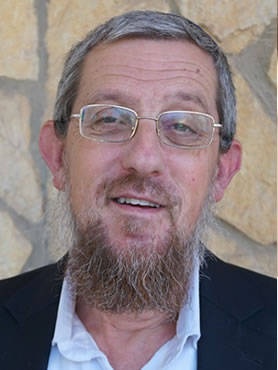At the Northern Side, before Hashem
הרב זכריה טובי
ראש הכולל
In the morning prayer, in the portion of the daily sacrifice, we add the verse: "at the northern side of the Altar before Hashem." (Vayikra 1:11)
Later on, we recite the Mishna: "Where is the place of the sacrifices? Kodshei kodoshim are slaughtered on the north ... and their blood is received in vessels on the north." What is the particular connection of north to kodshei kodoshim?
One who examines the verses in our parsha will discover that the command to offer the sacrifice on the north appears only in the context of the burnt-offering of the sheep: "If one's offering is from the flock, from the sheep or from the goats, for a burnt-offering; ... He shall slaughter it at the northern side of the Altar before Hashem." (Vayikra 1:10-11)
The law of the burnt-offering appears in the earlier verses: "If one's offering is a burnt-offering from the cattle ... he shall bring it to the entrance of the Tent of Meeting." (1:3) Why was the law of sacrificing "at the northern side, before Hashem" not mentioned there, and the Torah waited until the burnt-offering of the sheep to teach us this law? The Midrash comments on this (Vayikra Rabbah 2:11):
"He shall slaughter the bull [before Hashem]" ... Regarding the ram it says, "at the northern side, before Hashem." It was said: At the time that Avraham Avinu bound his son Yitzchak, G-d prepared two sheep, one of the morning and one of the evening? Why was all this necessary? So that when Israel offer the daily offering on the Altar and read this verse, "at the northern side, before Hashem," G-d remembers Akeidat Yitzchak ... Whether a non-Jew or Jew, whether man or woman, whether slave or maid-servant, who read this verse, "at the northern side, before Hashem" - G-d remembers Akeidat Yitzchak, as it says, "at the northern side, before Hashem."
Chazal reveal to us that the Torah waited to command about offering of the olah in the north until the offering brought from the ram, which serves as a reminder of the ram of Yitzchak Avinu. This is in order to teach us that through the sacrifice G-d remembers Akeidat Yitzchak Avinu for us. What is the connection of the northern side to Akeidat Yitzchak?
The four directions of the world reflect Divine attributes with which G-d created the world. The northern side represents the attribute of justice, as it says in Yirmiya: "From the north the evil will be released upon all the inhabitants of the world" (1:14) - because north is the attribute of gevurah, and therefore evil comes forth from there to the world. Yitzchak typified the trait of gevurah, "the fear of Yitzchak (Bereishit 31:42), and at the Akeidah, Yitzchak achieved the pinnacle of the trait of gevurah, as he dedicated his life for the sake of Hashem. Therefore, sacrificing on the north reminds of Yitzchak Avinu, as the Maharal writes (Derech Hachayim ch. 1): "Because the sacrifice of Yitzchak was a ram, and this is fitting for the north, as known to the Cabalists, because the Akeidah was from there." Thus, we understand why the Torah waited specifically until the ram to teach the law of offering on the north, which because it reminds of the ram of Akeidat Yitzchak.
Saying "On the north before Hashem" - means that a person is willing to give up his life for Hashem, which finds special expression in the burnt offering, which is burnt entirely on the Altar before Hashem. This indicates about the root of the service of the sacrifices. Korban is from the root KRV, drawing close to Hashem, that through the bringing of sacrifices a person submits himself completely before Hashem, and thereby he draws close to Him, as the Maharal writes (Gevurot ch.9):
The whole idea of sacrifices is to indicate that G-d is One in the world, and there is nothing other than Him. Therefore, you will not find in all the sacrifices neither E-l or E-lohecha, only the name Hashem, because the sacrifices are to indicate about His Oneness, that beings on the level of loftiness and quality are considered as nothing, and everything returns to him - because there is nothing other than His kindness.
Therefore, the sacrifices are called avodah by Chazal: "On Torah, on avodah, and on gemilut chasadim." Similarly, in prayer we say, "Return the avodah to the Sanctuary of Your House," because the idea of avdut (=slavery) is submitting all personal wants and acceptance of the Master's yoke. So, too, one who offers a sacrifice submits his being and desire to Hashem, and as such he becomes a servant of Hashem.
This principle is important as a preparation for our festival of redemption, during which we left the slavery of Pharaoh and turned into servants of Hashem, which is our both servitude and freedom simultaneously. May we merit the building of the Temple and the fulfillment of "There we will serve you in awe as prior days and as years of old.
קוד השיעור: 3723
(Translated by Rav Meir Orlian)
לשליחת שאלה או הארה בנוגע לשיעור:



.jpg)

